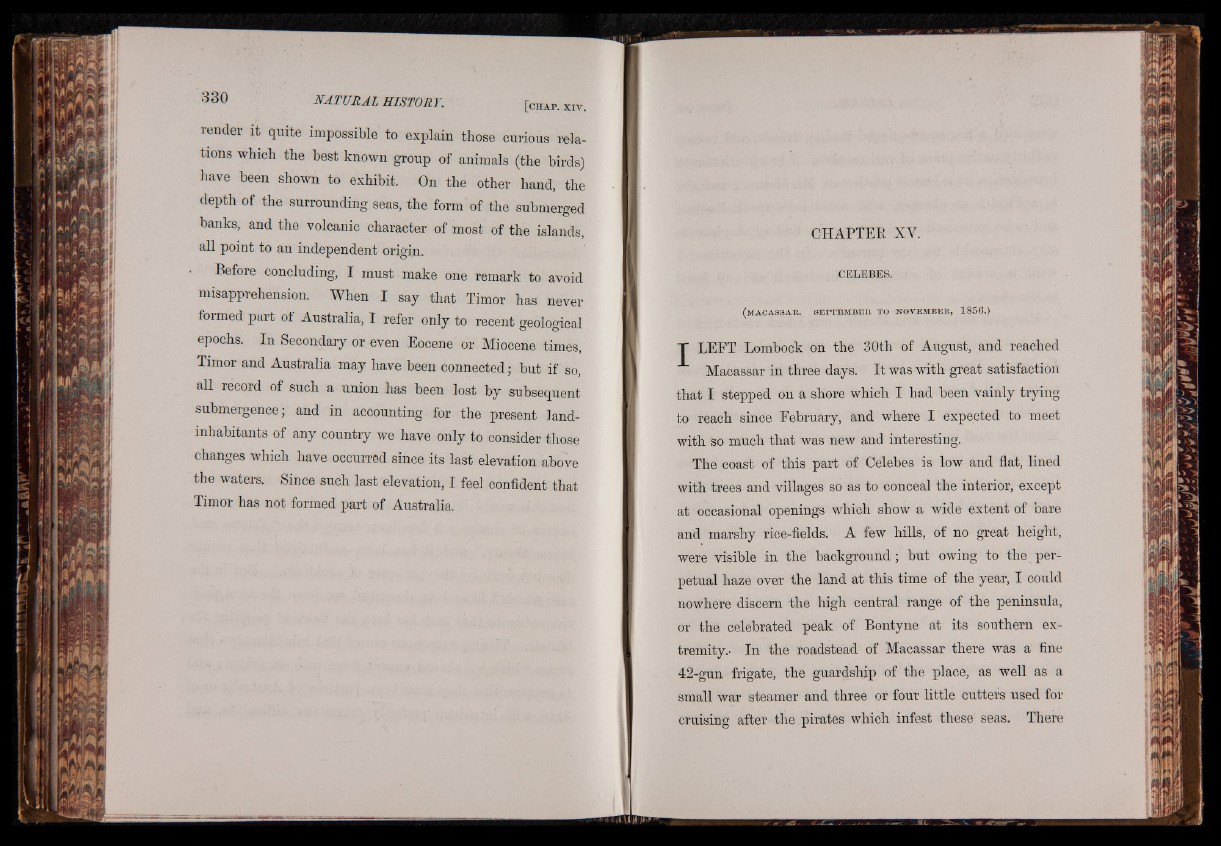
render it quite impossible to explain those curious relations
which the best known group of animals (the birds)
have been shown to exhibit. On the other hand, the
depth of the surrounding seas, the form of the submerged
banks, and the volcanic character of most of the islands,
all point to an independent origin.
Before concluding, I must make one remark to avoid
misapprehension. When I say that Timor has never
formed part of Australia, I refer only to recent geological
epochs. In Secondary or even Eocene or Miocene times,
Timor and Australia may have been connected; but if so,
all record of such a union has been lost by subsequent
submergence; and in accounting for the present land-
inhabitants of any country we have only to consider those
changes which have occurred since its last elevation above
the waters. Since such last elevation, I feel confident that
Timor has not formed part of Australia.
CHAPTER XY.
CELEBES.
(MACASSAR. SEPTEMBER TO NOVEMBER, 1856.)
J LEFT Lombock on the 30th of August, and reached
Macassar in three days. It was with great satisfaction
that I stepped on a shore which I had been vainly trying
to reach since February, and where I expected to meet
with so much that was new and interesting.
The coast of this part of Celebes is low and flat, lined
with trees and villages so as to conceal the interior, except
at occasional openings which show a wide extent of bare
and marshy rice-fields. A few hills, of no great height,
were visible in the background; but owing to the. perpetual
haze over the land at this time of the year, I could
nowhere discern the high central range of the peninsula,
or the celebrated peak of Bontyne at its southern extremity.'
In the roadstead of Macassar there was a fine
42-gun frigate, the guardship of the place, as well as a
small war steamer and three or four little cutters used for
cruising after the pirates which infest these seas. There